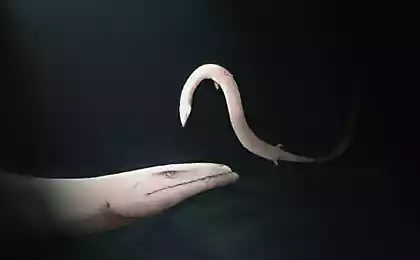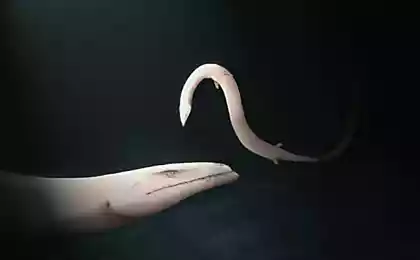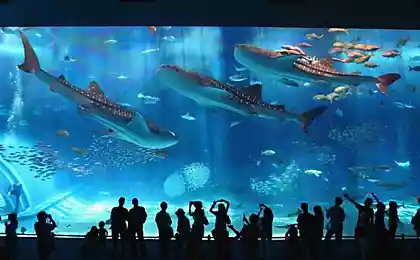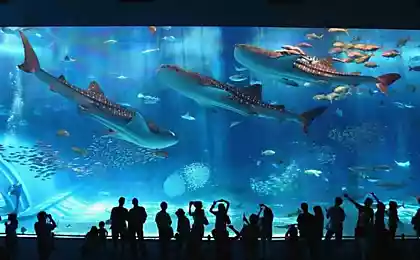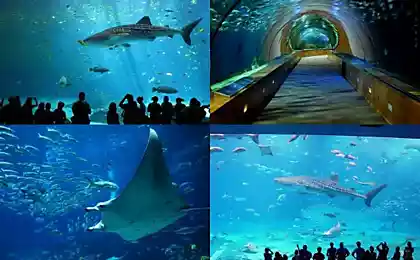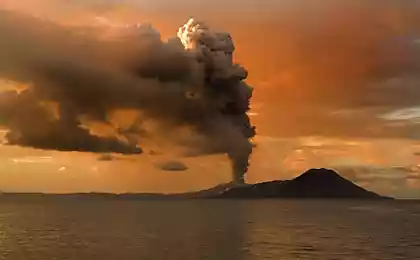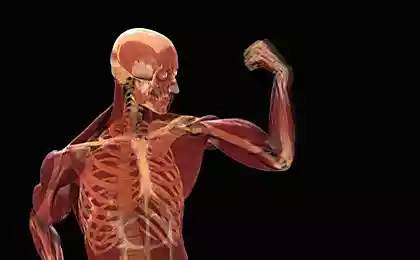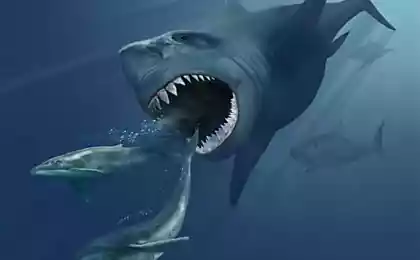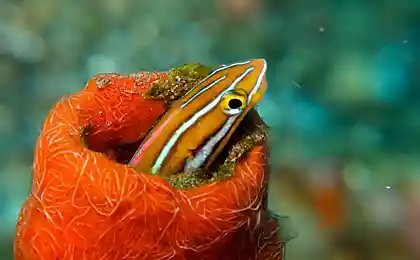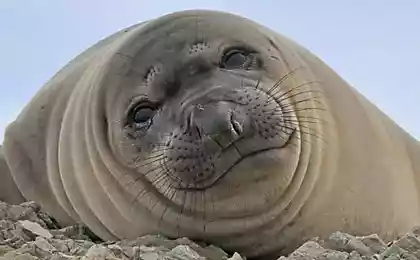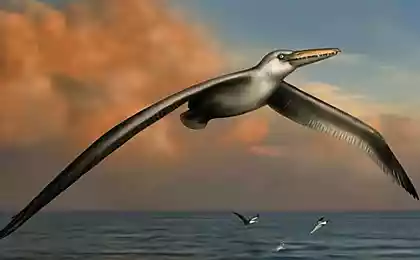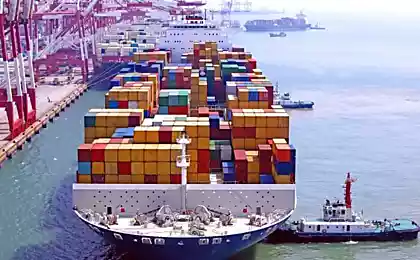2105
10 interesting facts about the marine life
Everyone knows that about 70% of the Earth's surface is covered by water. Ultimately, about 1, 3 billion cubic kilometers of water on the planet in the seas, rivers and oceans are still still poorly understood in the world, as well as the creatures that live in them.
10. The giant squid brains digest food
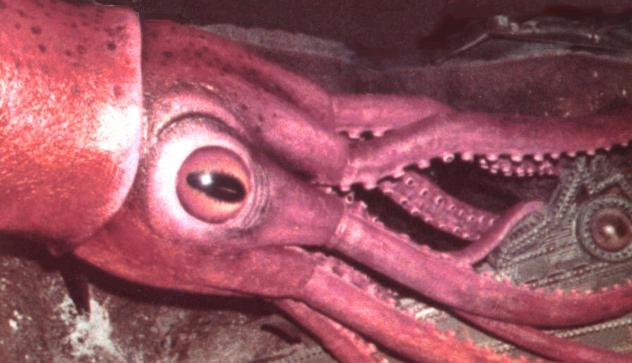
Colossal squid (Mesonychoteuthis hamiltoni) until recently considered fiction and in real life so far seen only a few. In 2007, still found the largest instance. His team caught fishermen from New Zealand in the Ross Sea near Antarctica. He was huge - as much as 10 meters long and weighing nearly 450 pounds. Squid was towed to New Zealand to study, and it was found something incredible: his digestive system runs right through the center of the brain.
9. Fish armor against piranhas

Piranhas, horror Amazon teeth razor, have very few natural enemies and nearly a list of potential prey. While piranha single can be a good dish for a dolphin or cormorant, their tendency to live in flocks of hundreds keeps most predators at bay. Piranhas are limitless lifestyle. As a result, other Amazonian fish had to adapt to their neighbors, and even the largest fish in the Amazon - Arapaima gigas, or giant Arapaima- needs a second layer of protection.
8 Invisible struggle

The most numerous forms of life in the ocean, which you will never see a family of bacteria known as SAR11. They live in all oceans of the world from the Arctic to the tropics, and they are incredibly effective in its work on the transformation of dissolved carbon into CO2. The most common predators of bacteria in the ocean at a microscopic viruses are closely related group pelagiphages. And they are a constant war with the bacteria SAR11.
7. 100,000 taste buds som
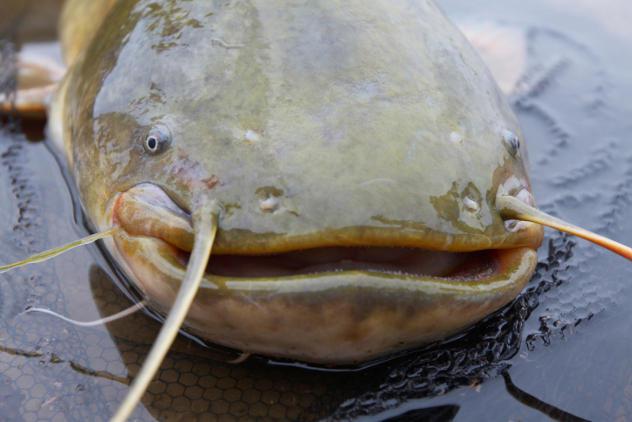
In humans, the number of taste buds varies from 2000 to 8000. They focused on a small piece of flesh, which move in the mouth. And about 100,000 soms taste receptors distributed throughout the body. In a sense, it's just a big COM floating tongue. Each taste bud is about 50 nanometers (50 billionths of a meter) in width, and greater than fish, so it has more taste receptor. Large fish may have more than 175,000 taste buds scattered throughout the body.
6. Dolphins can see through animal
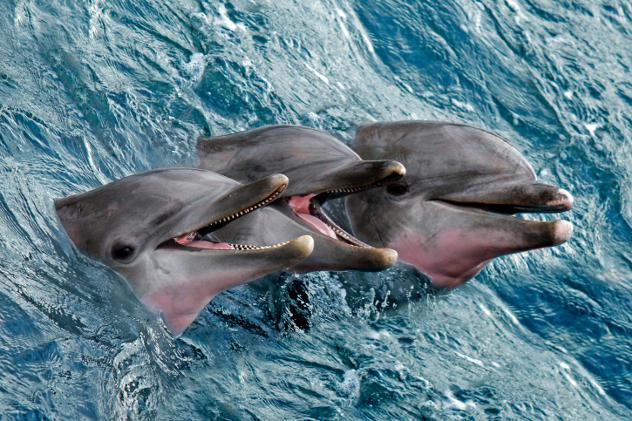
Dolphins, as is known, is used for moving sonar in water for hunting, communicating in common to all. Dolphin sonar emits high frequency sounds by pumping air through a network of tissue near their shells. Bag adipose tissue below the jaw collects restored sound waves and transmits them through the inner ear of a dolphin, where the information should be in the brain, creating "acoustic holographic image" - a picture of the ocean in front of them.
5. Swellshark
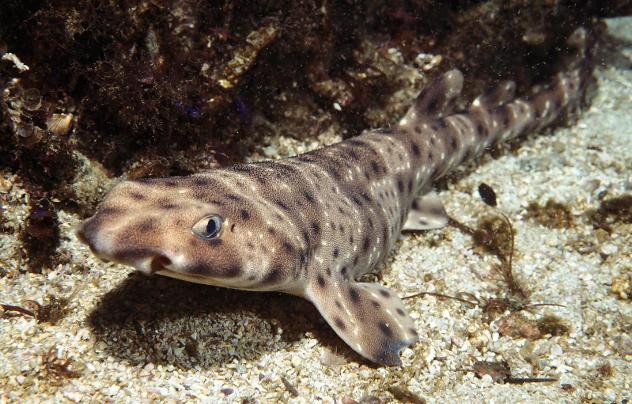
Most sharks repel predators because they shark. However, it still predators who hunt sharks. And less than sharks view, the more it has enemies. Swellshark is one of the smallest species of sharks. It grows to about 1 meter in length, and about the size of a small Doberman. These sharks feed on creatures that live on the bottom, preferring to ambush crabs and unsuspecting cuttlefish, risky pursuit of conventional fish. Day adventure is stealing lobster traps from the fishermen. And in defense Swellshark is a master of disguise: when it is threatened, it draws water into the bags, which are located around the abdomen, and increases in size by 2 times.
4. Human Shield Pompeii worms.
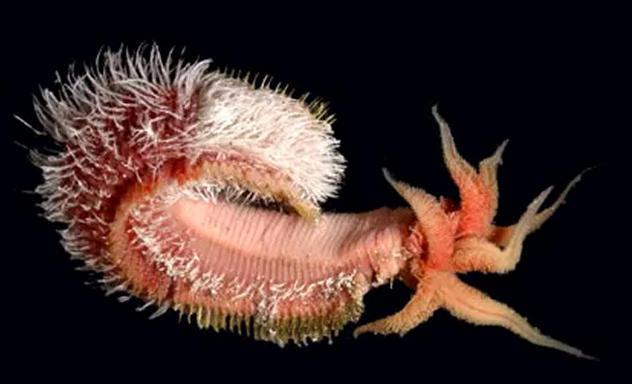
"The hottest animals on the planet, but the most difficult to study" - describes Pompeii worms or Alvinella pompejana. Not only that, these worms live at a depth of 2500 meters below the ocean surface at volcanic vents that heat the surrounding water up to 80 ° C, these worms also die when they are lifted to the surface. Over time, Pompeii worms considered the most resistant to heat the animals on the planet. They grow to about 13 inches in length and live in tubes that are directly attached to the "black smokers" - holes from which smoke comes out at the bottom of the East Pacific Rise.
3. Anguillidae can crawl on the ground
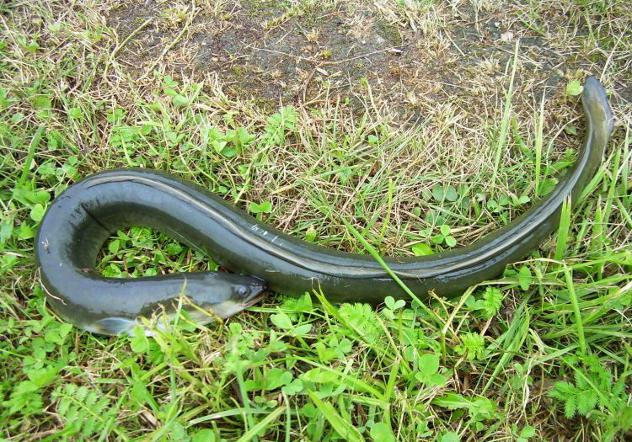
Anguillidae, commonly known as the European eels live in the lakes and waterways of northern Europe and the UK. Acne across almost 2 meters in length, though they typically only reach half of the length or even less. But they do not always live where they're supposed to be - Anguillidae can leave the ponds and slide on the land for a short period of time. They do this for two reasons - firstly, because they are looking for food - they usually prey on insects and earthworms. The second reason is the migration.
2. The largest migration in the world, taking place on a daily basis.
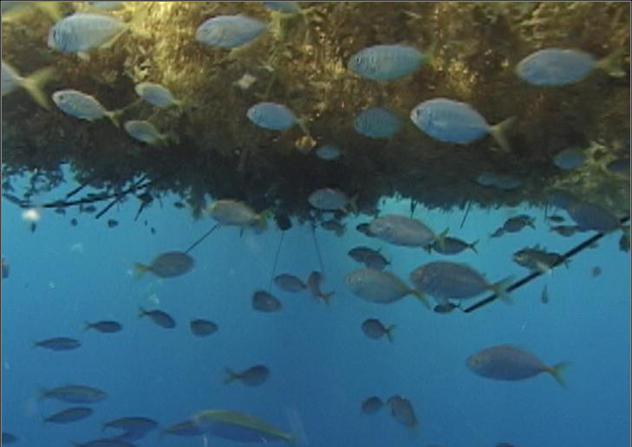
The Sargasso Sea is perhaps the most unique body of water in the world. He has no borders, but a series of converging currents, holding it at about the same place - right in the middle of the Atlantic Ocean. This body of water in the reservoir - the Gulf Stream, the North Atlantic and Canary Current surround it from all sides. In this case, the Sargasso Sea serves as a quiet center. He is called "the sea of stray ships", because the air in the region unnaturally calm and ships could be stuck there for a few days or weeks.
1 Google Street View: Oceans
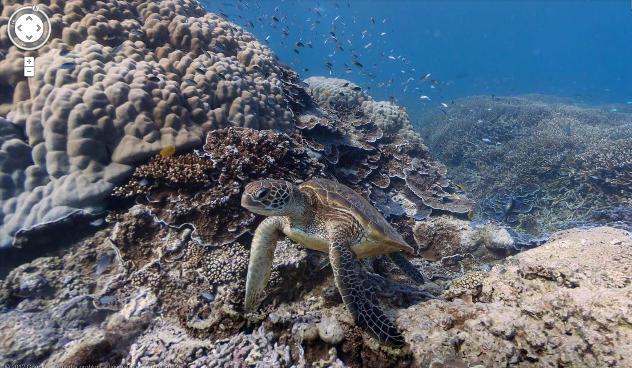
Google Street View is a popular addition to Google Maps, which allows you to see any place with any of the street. In 2007, Google sent a caravan of cars around the world to take pictures of everything. Later these photos piled into one long strip, which allows you to "walk" on any route at the touch of a button. But this is old news and hardly interesting.
10. The giant squid brains digest food

Colossal squid (Mesonychoteuthis hamiltoni) until recently considered fiction and in real life so far seen only a few. In 2007, still found the largest instance. His team caught fishermen from New Zealand in the Ross Sea near Antarctica. He was huge - as much as 10 meters long and weighing nearly 450 pounds. Squid was towed to New Zealand to study, and it was found something incredible: his digestive system runs right through the center of the brain.
9. Fish armor against piranhas

Piranhas, horror Amazon teeth razor, have very few natural enemies and nearly a list of potential prey. While piranha single can be a good dish for a dolphin or cormorant, their tendency to live in flocks of hundreds keeps most predators at bay. Piranhas are limitless lifestyle. As a result, other Amazonian fish had to adapt to their neighbors, and even the largest fish in the Amazon - Arapaima gigas, or giant Arapaima- needs a second layer of protection.
8 Invisible struggle

The most numerous forms of life in the ocean, which you will never see a family of bacteria known as SAR11. They live in all oceans of the world from the Arctic to the tropics, and they are incredibly effective in its work on the transformation of dissolved carbon into CO2. The most common predators of bacteria in the ocean at a microscopic viruses are closely related group pelagiphages. And they are a constant war with the bacteria SAR11.
7. 100,000 taste buds som

In humans, the number of taste buds varies from 2000 to 8000. They focused on a small piece of flesh, which move in the mouth. And about 100,000 soms taste receptors distributed throughout the body. In a sense, it's just a big COM floating tongue. Each taste bud is about 50 nanometers (50 billionths of a meter) in width, and greater than fish, so it has more taste receptor. Large fish may have more than 175,000 taste buds scattered throughout the body.
6. Dolphins can see through animal

Dolphins, as is known, is used for moving sonar in water for hunting, communicating in common to all. Dolphin sonar emits high frequency sounds by pumping air through a network of tissue near their shells. Bag adipose tissue below the jaw collects restored sound waves and transmits them through the inner ear of a dolphin, where the information should be in the brain, creating "acoustic holographic image" - a picture of the ocean in front of them.
5. Swellshark

Most sharks repel predators because they shark. However, it still predators who hunt sharks. And less than sharks view, the more it has enemies. Swellshark is one of the smallest species of sharks. It grows to about 1 meter in length, and about the size of a small Doberman. These sharks feed on creatures that live on the bottom, preferring to ambush crabs and unsuspecting cuttlefish, risky pursuit of conventional fish. Day adventure is stealing lobster traps from the fishermen. And in defense Swellshark is a master of disguise: when it is threatened, it draws water into the bags, which are located around the abdomen, and increases in size by 2 times.
4. Human Shield Pompeii worms.

"The hottest animals on the planet, but the most difficult to study" - describes Pompeii worms or Alvinella pompejana. Not only that, these worms live at a depth of 2500 meters below the ocean surface at volcanic vents that heat the surrounding water up to 80 ° C, these worms also die when they are lifted to the surface. Over time, Pompeii worms considered the most resistant to heat the animals on the planet. They grow to about 13 inches in length and live in tubes that are directly attached to the "black smokers" - holes from which smoke comes out at the bottom of the East Pacific Rise.
3. Anguillidae can crawl on the ground

Anguillidae, commonly known as the European eels live in the lakes and waterways of northern Europe and the UK. Acne across almost 2 meters in length, though they typically only reach half of the length or even less. But they do not always live where they're supposed to be - Anguillidae can leave the ponds and slide on the land for a short period of time. They do this for two reasons - firstly, because they are looking for food - they usually prey on insects and earthworms. The second reason is the migration.
2. The largest migration in the world, taking place on a daily basis.

The Sargasso Sea is perhaps the most unique body of water in the world. He has no borders, but a series of converging currents, holding it at about the same place - right in the middle of the Atlantic Ocean. This body of water in the reservoir - the Gulf Stream, the North Atlantic and Canary Current surround it from all sides. In this case, the Sargasso Sea serves as a quiet center. He is called "the sea of stray ships", because the air in the region unnaturally calm and ships could be stuck there for a few days or weeks.
1 Google Street View: Oceans

Google Street View is a popular addition to Google Maps, which allows you to see any place with any of the street. In 2007, Google sent a caravan of cars around the world to take pictures of everything. Later these photos piled into one long strip, which allows you to "walk" on any route at the touch of a button. But this is old news and hardly interesting.
